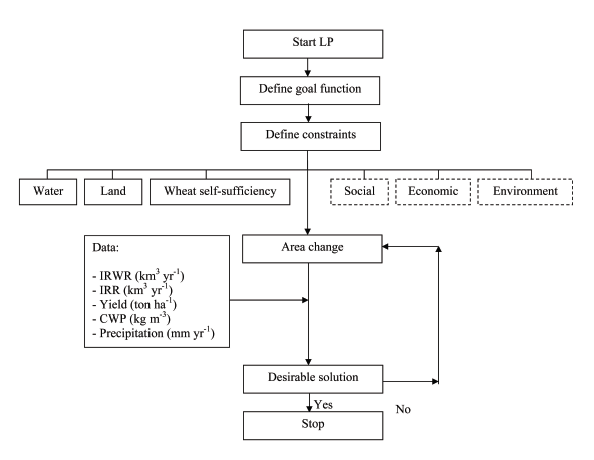Alleviating water scarcity through intra-country virtual water trade
Water scarcity and virtual water trade

In many parts of the world, food production is threatened by increasing occurrences of water scarcity. The suggestion of using virtual water trade (VWT) between countries has been put forward to alleviate water scarcity in international trades. In this project, we analyzed the potentials of VWT between provinces of Iran, which is achievable, in part, by structural changes in cropping pattern (SCCP).
How virtual water trade alleviate the water scarcity
In many parts of the world, food production is
threatened by increasing occurrences of water scarcity. The suggestion of using
virtual water trade (VWT) between countries has been put forward to alleviate
water scarcity in international trades. In this project, we analyzed the potentials
of VWT between provinces of Iran, which is achievable, in part, by structural
changes in cropping pattern (SCCP). We constructed a systematic framework to
assess SCCP at the provincial level under various driving forces and
constraints. A mixed-integer, multi-objective, linear optimization model was
developed and solved by linear programming. Five scenarios were designed to
maximize the national cereal production while meeting certain levels of wheat
self-sufficiency under various water and land constraints in individual
provinces. Based on different scenarios in ACCP, we calculated that 31% to 100%
of the total wheat shortage in the deficit provinces could be supplied by the
wheat surplus provinces. As a result, wheat deficit provinces would receive 3.5
billion m3 to 5.5 billion m3 of virtual water by
importing wheat from surplus provinces.


Multi
criteria decision analysis framework of the ACCP corresponding to the VWT
strategy. IRWR= internal renewable blue water resources, IRR= irrigation water
requirement, CWP= crop water productivity. Dash lines in the constraint are the
factors that were not considered here.